Last Updated April 4, 2020
Curious about the 50/20/30 budget rule and how it works? Find out if the 50/20/30 budget is a good strategy to help you budget your money better.
What Is The 50/20/30 Budget Rule?
The 50/20/30 budget rule is a simpler way to budget that doesn’t involve a lot of detailed budgeting categories. Instead, you spend 50% of your income (after tax) on needs, 20% on savings or paying off debt, and 30% on wants.
The 50/20/30 budget rule was first made famous by Senator Elizabeth Warren and her daughter Amelia Warren Tyagi. They co-authored a book called All Your Worth: The Ultimate Lifetime Money Plan where they go into more detail about this budgeting method.
In essence, the 50/20/30 budget rule is very similar to a reverse budget where the emphasis is on saving first and doing what you want with the money that’s left.
What Is A Reverse Budget?
A reverse budget is where you build your spending plan AFTER you have set aside money for saving. You pay yourself first, and what’s left over you can spend on your expenses. Once you set up your spending plan, you don’t have to track your spending or allocate where your money is going.
A reverse budget or a 50/20/30 budget is excellent for people who hate budgeting. You don’t have to track your spending and can spend as you like once your savings requirement is met.
The only difference between a 50/20/30 budget and a reverse budget is the 50/20/30 budget breaks down how much should go to wants, needs, and savings. Whereas the reverse budget only specifies how much money should go to savings—how you spend the rest of your income is up to you.
How To Use The 50/20/30 Budget Rule
The 50/20/30 budget rule is perfect for those that hate budgeting. Once you set up your spending plan, and put aside money for savings, you don’t have to allocate in detail where your money is going. The breakdown of your after-tax income is 50% to needs, 20% to savings or paying off debt, and 30% to wants.
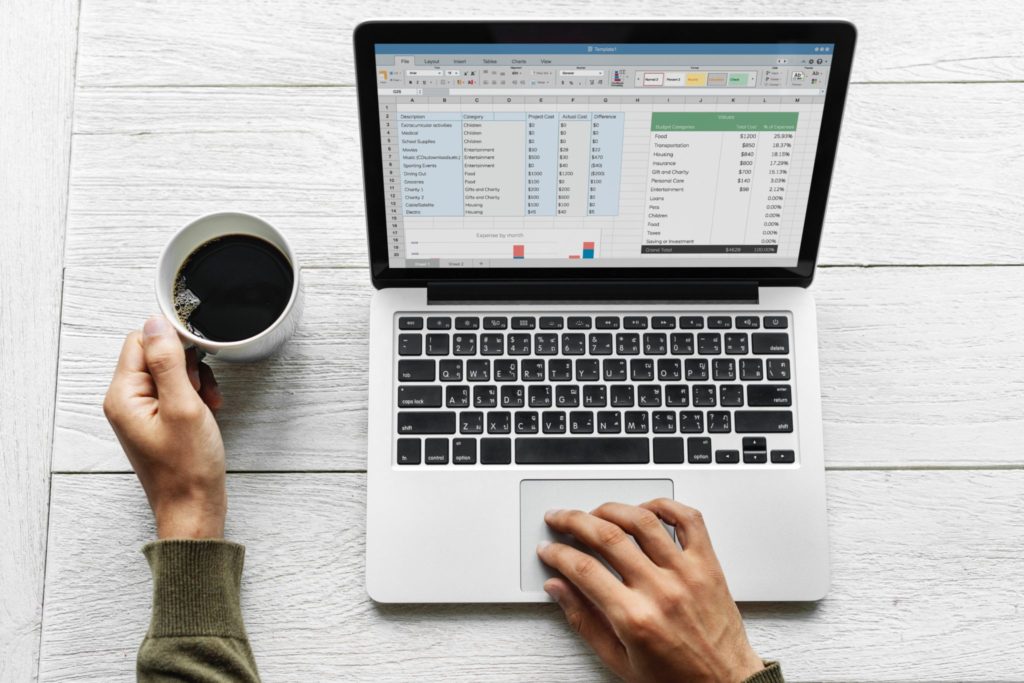
50% To Necessities
According to the 50/20/30 budget, 50% of your after-tax money should go to your necessities. Necessities include things such as food, housing, utilities, basic transportation, and so forth.
If you live in an expensive city like me, where housing alone may take up 50% of your income, you need to reduce your housing expenses or other necessities.
If you can’t reduce your housing expenses or other necessities, reduce the percentage of your wants. But whatever you do, try not to reduce your savings and debt repayment percentage.
20% To Savings and Debt Repayment
Next, 20% of your after-tax money should go to your savings or debt repayment. To make saving simple, automate your savings and “pay yourself first” before you pay your bills. When people save first, they have less money to spend, and tend to use the remainder on things they need.
This is because the money is just not easily available to spend. So you should automatically transfer 20% of your paycheck to an online savings or retirement account.
I recommend you use an online bank because it makes it harder for you to access your money (compared to a brick and mortar bank) in case you get tempted to spend it.
Radius Bank as a good online bank to try because it:
- offers competitive interest rates,
- has no monthly maintenance fees, and
- no minimum balance requirement after $100 to open.
Also, their checking account has free ATMs worldwide.
Automating your savings makes it easier to save because you’ll never be tempted to skip saving. The money just goes into your savings account automatically before you can get a chance to spend it.
If you would like a fun way to track your savings, download this FREE Savings Tracker. I love this tool because I’m a visual person and I stay motivated when I can see the progress I make.
Here’s an example of how I use the Savings Tracker below:
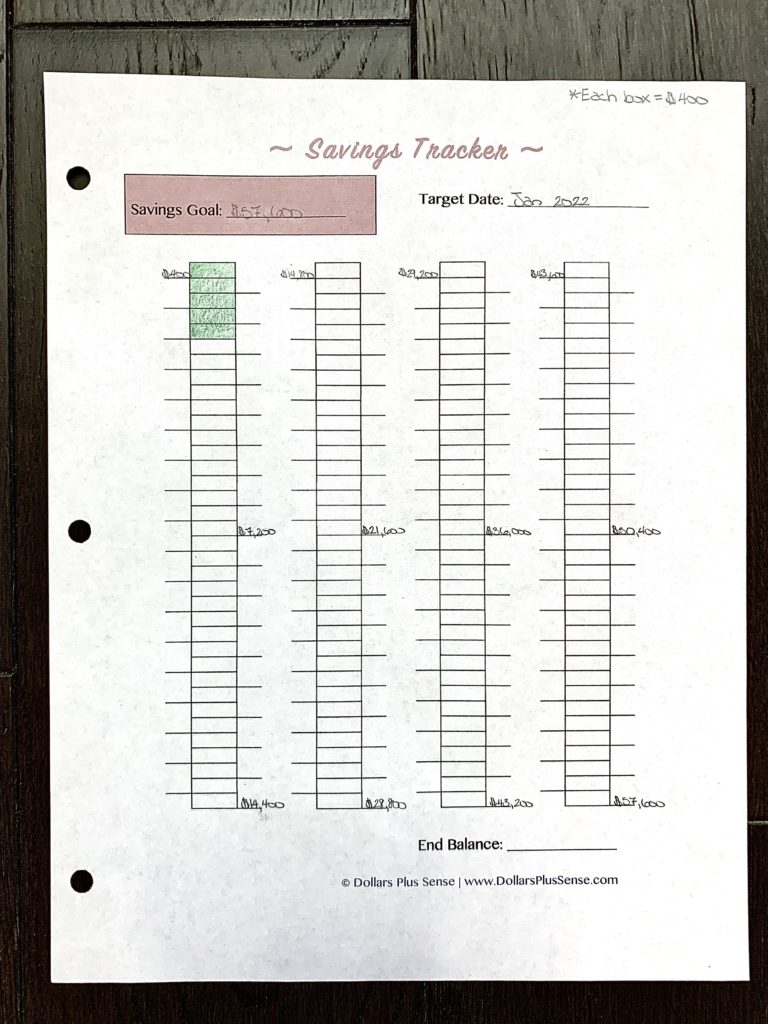
Saving vs. Debt: Which Should I Do First?
If you don’t have money set aside for emergencies, you need to focus on saving first. I recommend you have at least $1,000 saved before you even think about paying off your debt.
If you do not have an emergency fund that is fully funded yet, I would only pay the minimum balance on my debt and put the remainder of the 20% to funding my emergency fund.
Ideally, you should have 3-6 months worth of living expenses in your emergency fund. You should have 3 months worth of living expenses if you have relatively strong job security. You should have 6months (or more) if you have some instability in your employment or if finding another job could take you a long time.
When I say “living expenses” I mean only necessities, such as rent and groceries—I don’t mean shopping, entertainment, dining out, or vacations. If you are ever in a situation where you lose your job, so you have to rely on your emergency fund, you shouldn’t be taking vacations or dining out anyway.
You can read more about figuring how much you need in your emergency fund, and how to set it up in my article “How To Build An Emergency Fund.”
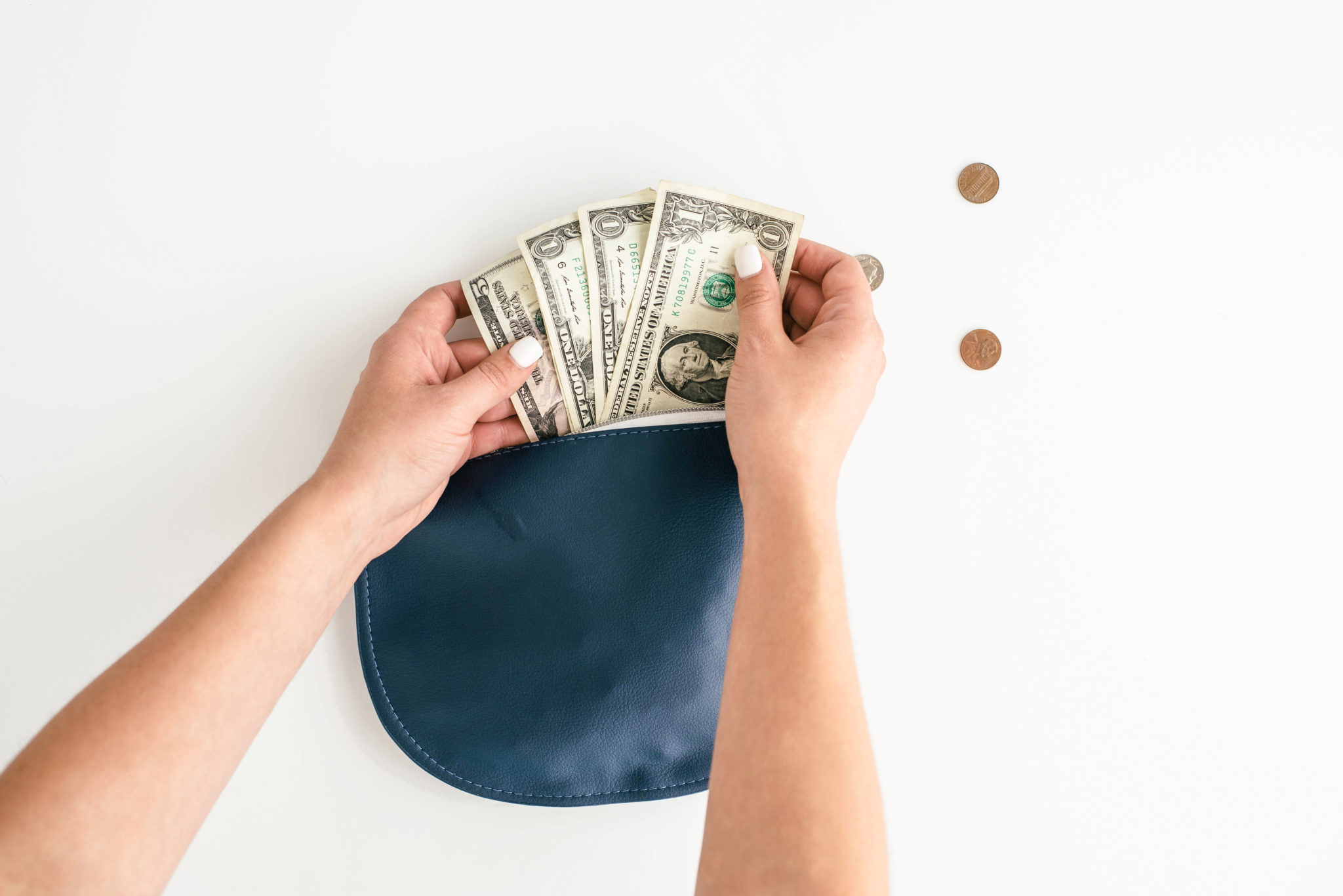
Once you have your emergency fund established and fully-funded, you can then put the entire 20% to debt repayment. I would first focus on only paying off high-interest debt (interest rate higher than 8%). Once you have paid off your high-interest debt, you can either:
- Save and invest the entire 20%, or
- Split 10% to go towards low-interest debt and 10% to saving and investing.
In my opinion, I would save and invest the entire 20% if the rate of return on your investment is higher than your debt interest rate.
In other words, if you invest your money in the stock market, and get on average a 6% return on your money, but your mortgage interest rate is 4%, I personally would not rush to pay off my mortgage. I would continue to invest because I am getting a higher return on my money.
But that’s a decision for you to make for yourself. Some people hate debt no matter the interest rate, and just want to get rid of it no matter what—and that’s okay.
- Related Article: Paying Debt Vs. Saving: Which Is Best?
Speed Up Paying Off Your Debt
You can also use an app like Qoins to help you automatically pay off your debt even faster. You’ve likely heard of apps that turn your spare change into investments (like Acorns) but Qoins is an app that takes that change and uses it to pay off your debt.
Qoins will send out payments according to the schedule that you’ve set up. They also track how much you’ve paid out towards your loans and see how much of a dent you’ve put in your debt.
I highly recommend Qoins if you want to speed up paying off your debt, while making it as easy and painless as possible.
30% To Wants
Finally, under the 50/20/30 budget, 30% of your after-tax income should go towards your wants. Wants included things like entertainment, vacation travel, dining out, clothing beyond the essentials, cable, internet, etc. The remainder 30% of your income should go towards things in this category.
You MUST Do This If You Hate Budgeting

If you want your 50/20/30 budget or you reverse budget to work, you cannot spend money that you don’t have. Do not rely on your credit cards to make up for any overspending.
If you save first, but then use your credit cards to “make up the difference,” then you’re not truly saving as much as you think you are, and the whole system will collapse. If you have trouble with overspending, try only using cash.
- Related Article: How To Use The Cash Envelope Method
I personally think nothing is better than tracking your spending in a monthly budget, but this method is a good alternative for people who hate budgeting.
A 50/20/30 budget doesn’t require you to categorize every expense or keep a detailed record of your spending. It will also ensure that you’re saving some of your income. So, just make a decision about how much you’re going to save every month and stick to it.
Summary
In summary, if you hate budgeting and tracking your spending, try the 50/20/30 budget. With this method, 20% of your monthly after-tax income goes to savings, 50% to necessities, and 30% to wants. Automate your savings so you’re not tempted to spend it.
Finally, if you decide to use this method, you need to stay with it and don’t rely on credit cards to make up for any overspending.
Related Articles:
- 17 Reasons Why Your Budget Doesn’t Work
- How To Choose The Right Budgeting Method
- How To Save 50 Percent Of Your Income
If you want to remember this article, pin it to your favorite Pinterest board.



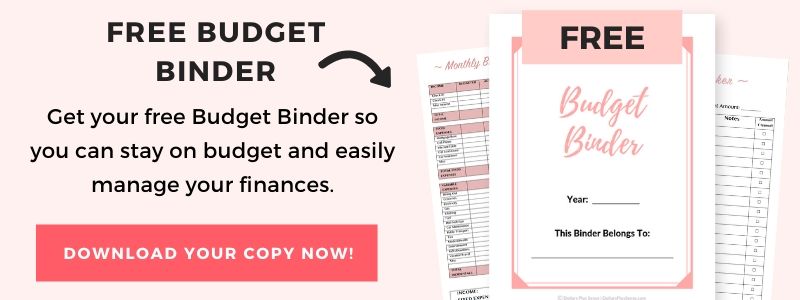

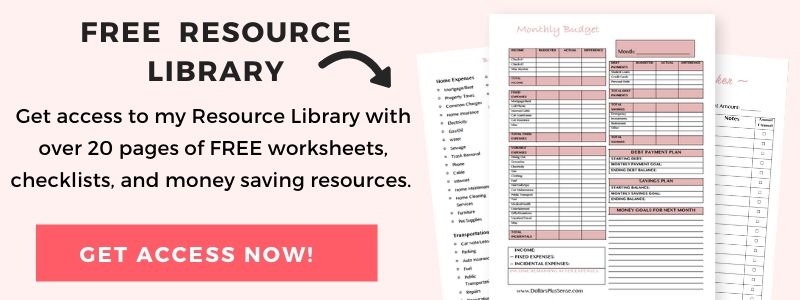


3 Comments on What Is The 50/20/30 Budget Rule And How Does It Work?